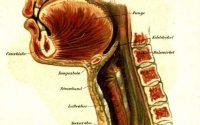Robot massage for Non-specific Low Back Pain
Researchers from Spain used a robotic massage to clarify the role of mechabical pressure on people with Non-specific low back pain (NSLBP).
Forty-four patients with NSLBP were randomly allocated into the two “arms” of the study (robot vs. placebo/control). In the robot arm, a physiotherapist identified the trigger points in the patient, programmed the robot, and applied robot-controlled air pressure massage for 10 min. The ADAMO robot applies an air current to the trigger points on the back of the patient. Then, thermotherapy and rehabilitation exercises were provided, as is the standard treatment for NSLBP.
In the control arm, patients were laid down on the robot platform. Physiotherapists identified the trigger points and the robot was connected, providing the expected background noise and vibration, but the air pressure was not applied. Thermotherapy and rehabilitation exercises were also applied.
A physician filled the Oswestry disability index (ODI) before starting the treatment and at the end of it, in a blind fashion. Patients also filled a visual analogue scale (VAS) after each of the 10 treatment sessions.
The results show that both treatments (robot and control) resulted in a significantly lower ODI, meaning that pain will improve over time.However, robot-treated patients significantly reduced their VAS levels, but not in control treatment. The treatment effect was irrespective of sexes. However overweight patients (body mass index ≥ 25kg/m2) benefited more in the robot arm treatment than patients with normal weight.
The authors concluded that robotic massage is, at least, as efficient as regular treatment in reducing low back pain, and may be more beneficial for specific patients, such as those with excessive weight.

